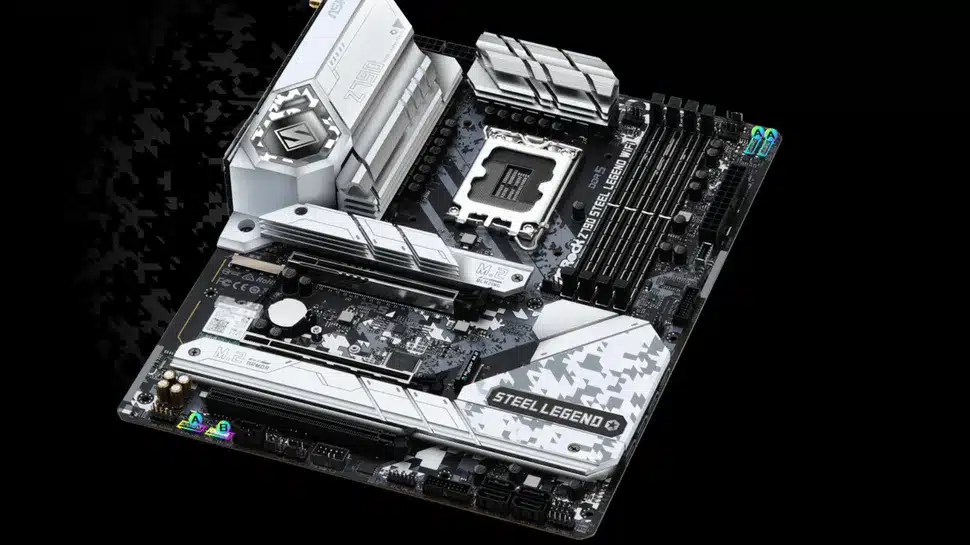In the ever-competitive world of PC hardware, enthusiasts eagerly await new releases and leaks that hint at the next big thing. Recently, a leak regarding Intel’s upcoming Arrow Lake CPUs has sparked significant interest—and some controversy—among the tech community. The leak suggests that overclocking capabilities will be exclusive to Intel’s most expensive Z890 motherboards, raising questions about accessibility and value for PC builders. Here’s a detailed look at what this leak reveals and its potential implications for gamers and enthusiasts.
The Arrow Lake Leak
Intel’s Arrow Lake CPUs are highly anticipated, promising significant performance improvements and new features that aim to keep Intel competitive against rivals like AMD. The recent leak sheds light on the overclocking capabilities of these new processors and their compatibility with different motherboard chipsets.
Overclocking Exclusivity
The most controversial aspect of the leak is the suggestion that overclocking will be restricted to Z890 motherboards. These motherboards are expected to be the top-tier option in Intel’s upcoming 800-series chipset lineup, likely carrying a premium price tag. Overclocking enthusiasts who aim to squeeze every ounce of performance from their CPUs will thus need to invest in these high-end motherboards.
Implications for Users
For many users, overclocking is a crucial feature that allows them to enhance their system’s performance without investing in the highest-end hardware. The limitation of overclocking to only the most expensive Z890 boards could alienate budget-conscious builders and limit the overall appeal of Arrow Lake CPUs.
What This Means for PC Builders

Increased Costs
The requirement to purchase a Z890 motherboard for overclocking significantly increases the overall cost for users who want to maximize their system’s performance. High-end motherboards can be significantly more expensive than mid-range options, adding to the financial burden on users.
Limited Options
By restricting overclocking to the Z890 chipset, Intel reduces the options available to builders. Users who prefer mid-range or entry-level motherboards will miss out on the ability to overclock, potentially driving them to consider alternatives from AMD or even previous Intel generations that offer more flexible overclocking capabilities.
Intel’s Strategy: A Double-Edged Sword
Driving Premium Sales
From a business perspective, this move could be seen as a strategy to drive sales of premium Z890 motherboards. By making overclocking an exclusive feature, Intel could push enthusiasts toward more expensive hardware, potentially increasing revenue from high-end components.
Risking Customer Loyalty
However, this strategy comes with significant risks. Many enthusiasts have long valued Intel’s overclocking capabilities across a range of motherboards. Restricting this feature could lead to dissatisfaction among Intel’s loyal customer base, pushing them to explore other options in the market.
Industry Reactions
The leak has sparked a variety of reactions within the tech community, from disappointment to cautious optimism.
Enthusiast Community
Among enthusiasts, the reaction has been largely negative. Overclocking is a cherished feature that allows users to push their hardware to its limits. The idea of having to invest in the highest-end motherboard to access this capability has not been well received.
Industry Analysts
Some industry analysts believe that this move could backfire on Intel. While it might drive short-term sales of high-end motherboards, it could also erode Intel’s market share in the long run as users look for more flexible and cost-effective alternatives.
Looking Ahead: Potential Changes
As with any leak, it’s essential to consider that the information might not reflect Intel’s final plans. The company could respond to the backlash by making overclocking more accessible across different motherboard tiers.
Possible Adjustments
Intel could introduce limited overclocking capabilities on mid-range motherboards, offering a compromise that keeps enthusiasts engaged without forcing them into high-end purchases. Alternatively, Intel might enhance other features on non-Z890 motherboards to provide added value.
Conclusion
The Intel Arrow Lake leak suggesting overclocking exclusivity to Z890 motherboards has certainly stirred the pot within the tech community. While the move could drive sales of premium motherboards, it risks alienating a significant portion of Intel’s user base. As we await official announcements, it remains to be seen whether Intel will adjust its strategy in response to the community’s feedback. One thing is clear: the landscape of PC building continues to evolve, with each new development offering both challenges and opportunities for enthusiasts and manufacturers alike.
















